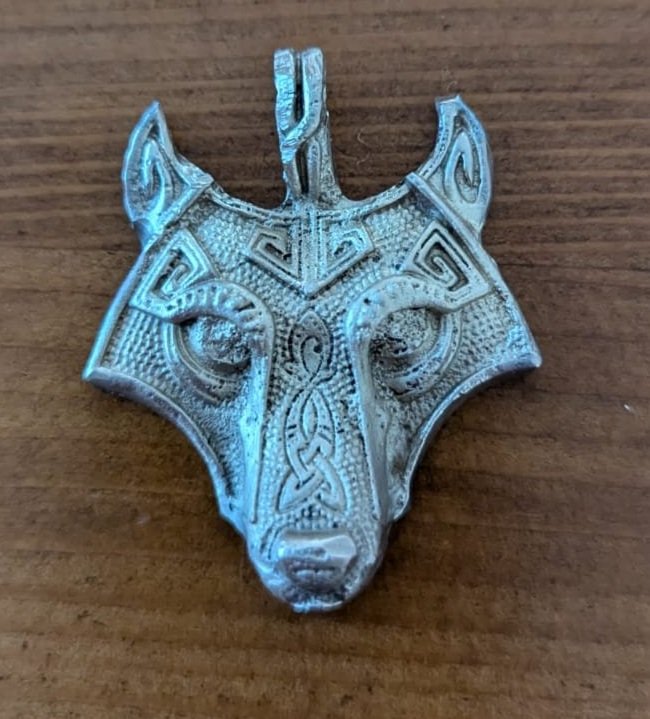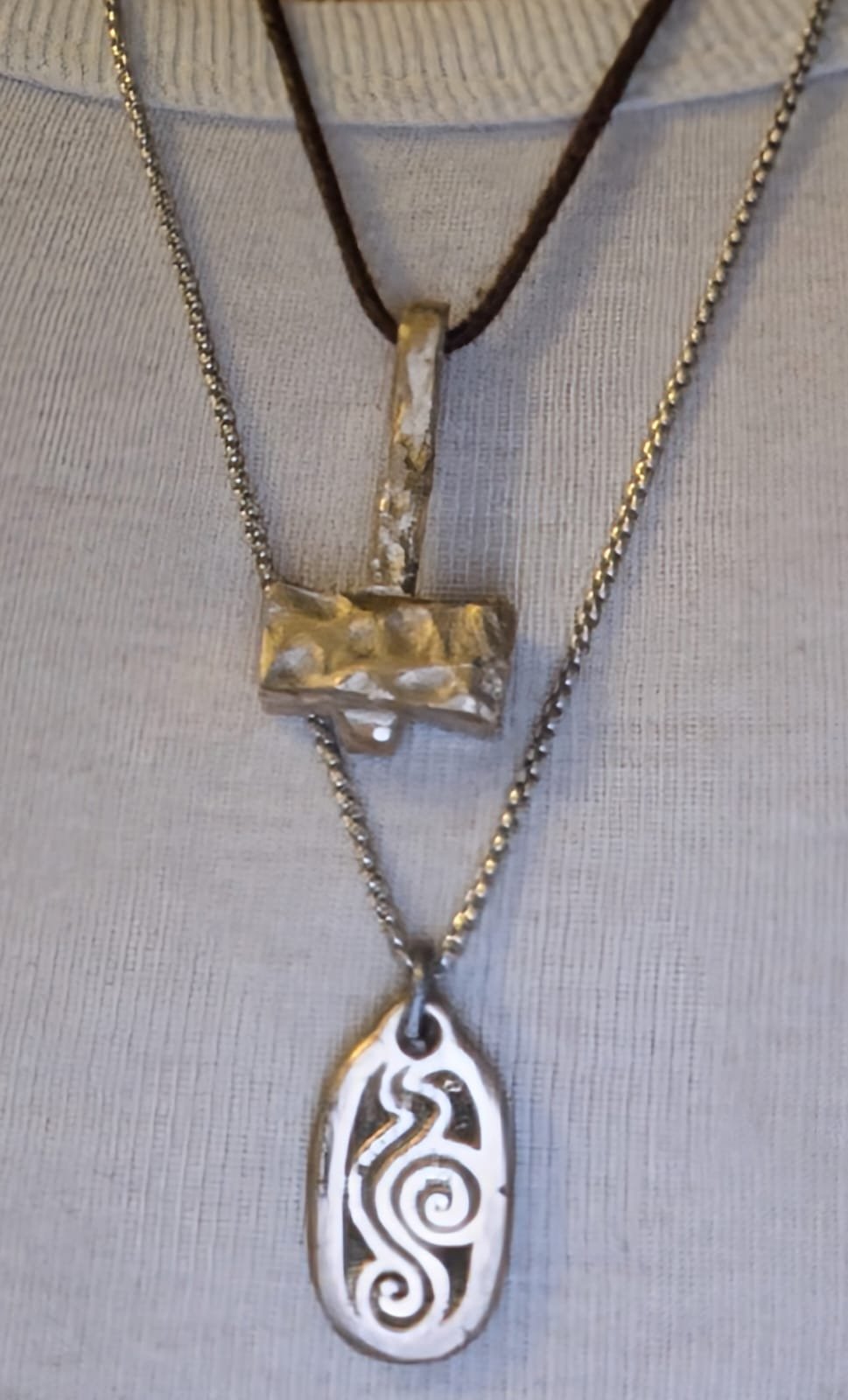Gates of Avernus
Bronze Casts & Pendants
Most of my life I felt fascinated by the creation of things. I marveled at blacksmiths in movies or games, as early on as The Secret of Mana for the SNES.
I ultimately decided to turn this fascination into something tangible and purchased a gas-fired foundry, I lovingly named Avernus.
Should you stand next to her when she is at temperature, you will understand why.
The process
The casting process employed utilizes a traditional sand-casting technique with a specialized heat-resistant petroleum-bonded sand. Molds are created using templates, often sourced from inexpensive jewelry pieces from online marketplaces like AliExpress. These templates serve as the foundation for producing refined, high-quality jewelry pieces.
A wooden frame is filled with sand, which is then compacted to form a solid base. A talcum powder-coated template of the desired design is inserted into the sand, ensuring a smooth release of the mold upon completion.
Once the sand is compacted, the two halves of the frame are separated, and the template is carefully removed to preserve the intricate details of the mold. Two channels are carved into the top half of the mold: a larger pouring channel for metal infusion and a smaller air vent to prevent pressure buildup and ensure a clean cast.
After the template is secured in the sand, the entire surface is coated with talcum powder to create a clean separation line. The second half of the frame is then added and filled with sand to encapsulate both sides of the template.
With the mold prepared, the metal is melted in my gas-fired foundry, capable of reaching temperatures approaching 1500°C. While melting iron is just out of reach, a bright yellow glow being the best Avernus can manage with the material, the foundry excels at handling aluminum, copper, and tin. Bronze, to be precise a 20/80 tin-copper bronze alloy, is a primary material for my creations.
Once the metal reaches its molten state, impurities are skimmed off the surface. The crucible is then extracted with special made wrought iron tongues. Now things have to move fast, despite the immense heat that is radiating from the crucible. With steady hand, the metal must flow at a constant rate into the prepared mold. A complete pour is indicated by metal flowing out of the air vent, as pouring channel and air vent are on opposing sides of the mold.
One must however remember that sometimes one can prepare everything correctly but a small mistake in pouring technique can ruin the cast. Luckily every bit of bronze can simply be molten down again to be reused in later projects.
After dousing the fire, shutting down the foundry and some cleanup, the cast metal is removed from the mold, which is sacrificed in the process. It is done this way, so that the metal had some time to solidify before being manipulated. This prevents warping in thinner pieces. The no longer glowing but still incredibly hot metal is then quenched in water to cool it rapidly and remove any residual sand.
Successful casts undergo post-production processes, including the removal of pouring and air channels, grinding off excess material, and polishing. These tasks are performed using a Dremel tool with various attachments and, for larger pieces, a belt sander.
Why Bronze?
“Traditional” 20/80 Bronze like the one I am making has a high degree of corrosion resistance, is still easy enough to work with and has an absolutely beautiful golden finish. The recipe I use was once used for the creation of church bells and even my small pieces have a beautiful sound to it when struck against each other.
Many people that have never really interacted with bronze, myself included, may have this image of a reddish brown, almost copper colored metal in their head when thinking of the alloy. This is after all how it often is portrayed in games, pop culture and even the Olympics.
While it is true that there are bronze alloys that do fit that description, it would be false to claim that this is the only way, the alloy can look like. Bronze after all is not a single metal but a plethora of different copper alloys. One type of bronze that displays the reddish brown color, so often associated with it is silica-bronze, which is praised for its strength and corrosion resistance. There are however many other types of bronze, like the brightly golden brass (yes the material that is giving brass instruments its name is indeed a type of bronze) and my 20/80 mix, the “traditional” bronze, which is falling somewhere in between, being less golden than brass but far brighter than silica bronze.
Examples of things I have made























